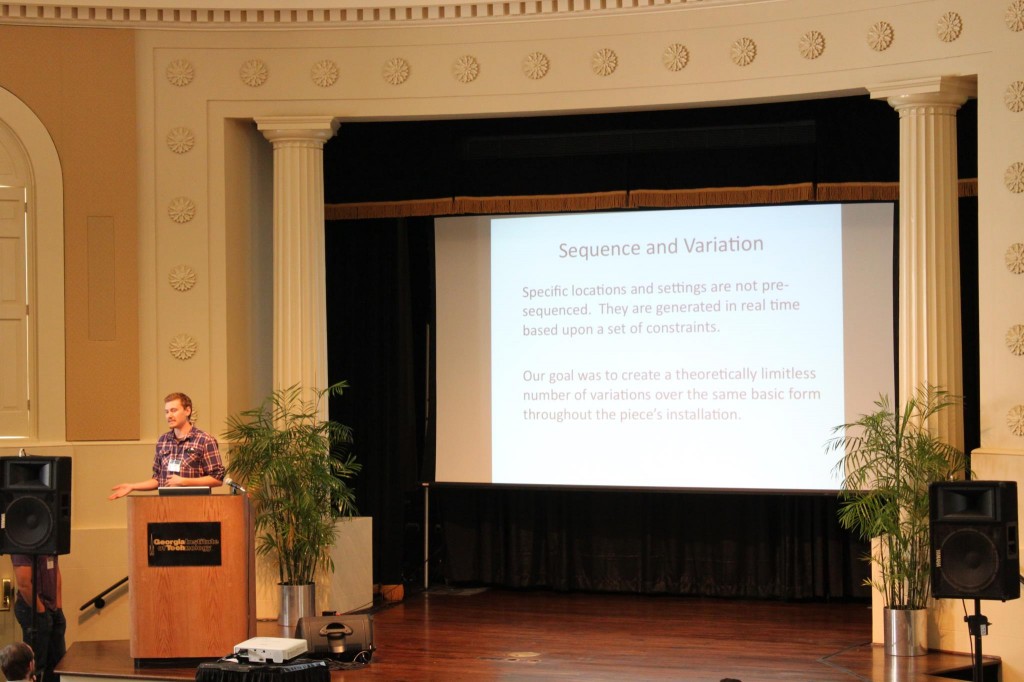I created this piece in collaboration with the new media artist Muhammad Hafiz Wan Rosli this spring. It was featured in the UCSB Media Art and Technology Program’s “Bits and Pieces” Exhibition back in May and we’ll also be showing it on September 1st at the Soundwalk Festival in Longbeach.
This is a technical description from the Soundwalk proposal:
“Drip is an interactive sound sculpture consisting of 16 tuned metal bars hung from a 3” by 3” by 5” high (freestanding) iron frame. Attached to the frame above each bar are solenoid water valves that can be triggered by an Arduino microcontroller. As the valves are opened and closed, drops of water pass through them falling onto each of the sixteen bars. The resulting sound is acoustically amplified through attached piezoelectric microphones. This action of falling water produces rhythms and melodies which are sequenced in real time and which can be altered by the audience’s interaction via light sensors embedded in the piece. Since all sound is generated acoustically, viewers can also interact with the piece by directly tapping the bars or plucking the nylon wire that suspends them in the air. The resulting soundscape is something like a surrealist version of rain falling on a tin roof or a collection of gongs being struck in chaotic mathematical patterns.”


 Music
Music